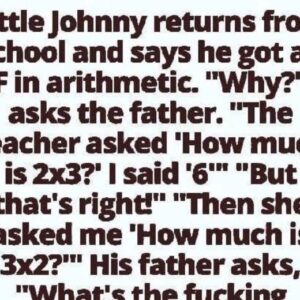If you have money in savings, this could be a great time to convert some of that money into a Certificate of Deposit (CD). That’s because the Federal Reserve has pushed interest rates to their highest levels in 16 years, but it may soon ease the gas. If that happens, today’s standard rates on savings and money market accounts will start to drop, but the highest rate CD you close today will be guaranteed for months or years to come.
main sockets
- Certificates of deposit are paying their highest rates in at least 16 years, thanks to the Federal Reserve’s fierce battle against inflation. It is currently unknown if the Fed will raise the federal funds rate again this year – which could push CD rates slightly higher, if that happens.
- With certificates of deposit already paying record rates, and any impact from the Federal Reserve would only push them marginally higher, it might be a good time to lock in one of today’s guaranteed rates.
- Savings accounts and money market accounts also pay exceptionally high rates, but once the Fed rate starts to fall, so do the savings and money market rates. By contrast, a CD is rate locked until the end of its term.
CDs are already paying record rates
In an effort to combat high post-pandemic inflation, the Fed has aggressively raised the federal funds rate since March 2022. With 11 increases in 12 meetings, the Fed raised its benchmark rate to 5.25%, which brought it past its 2006-2007 peak and to its highest level. Since 2001.
As a result, certificates of deposit prices have skyrocketed. Depending on the term, you can now earn three and a half to seven times more with one of the current CDs than you could in early 2022. Although the highest rate nationwide is currently 5.75% APY, there are nearly 30 options in the pipeline. Our daily ranking of the best CDs nationwide that pay 5.50% APY or better. Pay rates scores above 5.00%.
Why it’s always smart to shop around for the best CD prices
| account type | Highest rate available nationwide today | National average across all FDIC banks |
|---|---|---|
| CD for 3 months | 5.35%APY | 1.11%APY |
| CD for 6 months | 5.75%APY | 1.30%APY |
| CD for one year | 5.60%APY | 1.72%APY |
| CD for two years | 5.30%APY | 1.47%APY |
| CD for 3 years | 5.13%APY | 1.37%APY |
| 4 years CD | 4.85%APY | 1.30%APY |
| CD for 5 years | 4.77%APY | 1.37%APY |
Should I wait for a higher price?
It is certainly possible for CD rates to go up a bit. The Fed has not yet indicated – as it has not yet decided – whether it will implement another rate hike this year. Its next meeting on September 20th will end with an announcement that it will either keep rates steady or crash them higher. It is not possible to know what decision they will make at the moment.
No matter what they decide in September, there will still be two more Fed rate meetings in 2023, one in early November and one in mid-December. Since the central bank makes each of its rate decisions one-by-one and based on the latest economic data, any given meeting may result in an increase, hold or decrease.
However, financial markets always try to anticipate the Fed’s moves, and at the moment, markets are placing odds of less than 10% on a September rate hike. Then, they put the probability at one-third or lower to increase in November or December.
Although the future will remain a bit vague, there are some things that are fairly certain. First, any increase the Fed chooses to make would almost certainly be a minimum of 0.25%, because it eased the gas pedal compared to the fast and furious increases in 2022. Second, Fed members said in public comments recently that they don’t see the committee cutting rates. Interest until at least 2024.
For the CD shopper, that means bearable prices could Still climbing higher. But if the Fed holds interest rates steady in September, we could also see rates start to ease. It is also worth keeping in mind that any increase in CD rates at this point is likely to be minor, as the majority of the CD rate rise has already occurred. Sure, you might be able to earn another quarter of a percentage point. But on a CD that’s already paying more than 5.00%, that’s a minimal boost – and probably not worth the risk that you could lose it if prices drop before you lock it in.
The downside of high-yield savings accounts
With the best high-yield savings accounts and the best money market accounts also paying record rates right now, it can be tempting to keep your savings in one of these liquid accounts. After all, the highest rates on these accounts aren’t much lower than the best short-term CD rates. But remember: Savings accounts and money market accounts pay a variable rate, which means it can change at any time and without notice.
Once the Fed signals that it is no longer likely to raise interest rates – and eventually starts lowering the benchmark interest rate – rates for savings accounts and money market accounts will begin to decline. And while new CDs offered at that time will also have lower rates, any CD that closed before the price drop will continue to offer its record APY until the end of its term.
Disclosure of the price collection methodology
Every business day, Investopedia tracks the rates of nearly 100 banks and credit unions that offer savings accounts to customers across the country, using that data to determine the daily ranking of the highest-paying accounts. To qualify for our listings, an institution must be federally insured (FDIC for banks, NCUA for credit unions), and the minimum initial deposit for a savings account must not exceed $25,000.
Banks must be available in at least 40 states. And although some credit unions require you to make a donation to a specific charity or association to become a member if you don’t meet other eligibility criteria (for example, you don’t live in a certain area or work in a certain type of job), we exclude credit unions whose donation requirements are $40 or more. For more information on how to choose the best high-yield savings accounts, read our full methodology.





